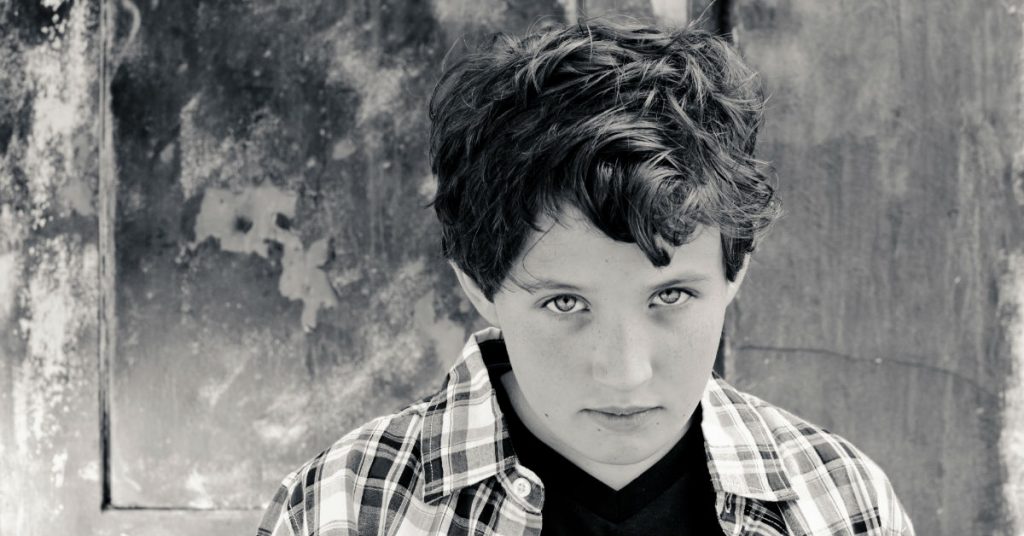
Teenagers who cause harm to themselves can be very confusing to parents. The issue goes far beyond simply asking them to stop the behavior. There are always underlying causes that present themselves in these situations. Unfortunately, this isn’t a unique situation. Many parents are undergoing similar confusion when their teens engage in self-harming behaviors.
In fact, according to research from Healthy Place, one in every five females and one in every seven males will engage in self injury. In total, approximately one third to one half of all teenagers have participated in some form of self injury. Ninety percent of those who engage in self harm do so in their teen or pre-adolescent years, and more than two million cases are reported annually in the United States.
These statistics show that teenage self harm is far more common than many people might realize. There are also many misconceptions surrounding teen self injury, the causes, and treatment options. If you have teenagers, it’s important to watch for some important warning signs and understand the truths about this condition so you can offer the best help.
Characteristics of Self Harm
Parents should recognize the differences between non suicidal self harm (NSSI) and self harm with the intent to take one’s life. According to a study published in the peer reviewed journal Psychiatry, NSSI is characterized as methods teens use to “cope with distressing negative affective states, especially anger and depression, and mixed emotional states.” Teens don’t attempt to hurt themselves enough to kill themselves, but they frequently engage in a myriad of destructive behaviors.
The study also shows that the most common characteristics of self harm include:
- Cutting
- Burning
- Hitting
- Pinching
- Banging
- Punching walls or other objects to cause pain
- Breaking bones
- Ingesting toxic substances
- Interfering with the healing of wounds
Each of these characteristics are done without the intent of suicide, and adolescents who engage in these habits often report feeling minimal or no pain. According to data from countless studies, it seems to be an addictive behavior that, once started, is very difficult to discontinue.
The Reasons Teens Turn To Self Harming Behaviors
There are many, many factors that cause teens to develop self harming behaviors, most of them relating to their mental well being. The majority of adolescents who develop self harming behaviors also experience developmental disabilities, eating disorders, and borderline personality disorder (BPD).
Research from a PubMed.gov study shows that 15 percent of those diagnosed with developmental disabilities (ranging from mild to severe) will engage in self harm. The vast majority of those with BPD will exhibit symptoms of self harm as well.
The studies also show that 35 percent of women who are diagnosed with self harm also experience an eating disorder like anorexia and bulimia. This data strongly indicates that those with a negative image of themselves will engage in self harm as a way to cope with their “deficiencies.”
Although it’s most common in the three categories mentioned, those without those mental handicaps can also develop the condition. Several factors can influence the risk of an adolescent engaging in self harm, including:
- Depression, anxiety, post-traumatic stress disorder (PTSD), and other internalizing mental disorders
- Conduct disorder, oppositional defiant disorder, and other externalizing mental health disorders
- Substance abuse
- Sexual abuse, particularly for those who were abused as a child
- General child abuse
- Other psychiatric disorders
- Bullying
- Confusion regarding sexual orientation
- Inability to express emotion
It’s very important to recognize how sexual abuse plays into the equation. Statistics from Healthy Place show that 50 percent of adolescents who intentionally harm themselves have been sexually abused as a child. The resulting psychological damage leads to an inability to handle emotions and distress in a healthy manner.
Overall, NSSI “is usually the result of an inability to cope in healthy ways with psychological pain” according to the Mayo Clinic. Their research indicates that those who engage in self injury do so to:
- manage their mental health
- provide distraction from pain
- feel something when they’re struggling to manage emotions
- punish themselves for perceived faults
- communicate a cry for help to the outside world
- feel a sense of control
Signs of Self Harm
It’s never too early to begin looking for signs of self harm in your child. It often starts earlier than you might think.
“Self-harm typically starts at about age 14,” says Karen Conterio, the author of the help book Bodily Harm. “But in recent years we’ve been seeing kids as young as 11 or 12. As more and more kids become aware of it, more kids are trying it.”
Oftentimes, teens are very skilled at hiding the evidence of their self harm from family and loved ones. However, there are some telltale signs that can indicate a problem. Here are some things parents should look for:
- Small linear cuts on the body
- Unexplained cuts, bruises, scratches, or other injuries
- Mood changes
- A general sense of unhappiness
- Wearing of baggy or loose clothing, long sleeves, long pants, and other concealing clothing, even on hot days
- Evidence of razors, scissors, lighters, knives, and other harmful items in your teen’s bedroom or bathroom
- Isolation and avoidance in social situations
- Unexplained blood spots on clothing
If you notice any of these symptoms, it can be an indicator of a very serious problem. A carefully planned and extremely sensitive intervention may be in order to diagnose issues with self harm.
Treatment Options
Treatment is essential for helping your child deal with their psychological issues and lead a normal life. This could be a lifelong battle. Unfortunately, self injury is an addictive behavior, meaning they may participate in self harm for years and year. In addition, many people often learn to quit the behavior as a teenager and then pick it up again years later.
According to Lindsay Taliaferro, Ph.D., an assistant professor of health sciences and long time studier of adolescent behaviors, connecting with teens and showing unconditional love is key to beating this behavioral issue.
“One of the most important protective factors against teens engaging in self-injury was parent connectedness, and, for females, connections with other pro-social adults also were associated with reduced likelihood of engaging in self-injury,” Taliaferro, explained to Psych Central.
Parents can create this sense of love and connection through their own education. Learn as much as you possibly can about self harm in teenagers. You might enroll in a parenting course that focuses specifically on destructive teenage behaviors to learn more about what you can do as a parent to solve the problem.
Even after gaining further education, you shouldn’t face this challenge alone. Professional help is almost always a critical element for teens to overcome self injury. A doctor should treat any injuries to prevent infection and any lasting problems.
You should also visit a psychiatrist or other mental health professional. Psychotherapy is usually the first step in a long journey of treatment. Teens have to decide for themselves that they they’ll stop the destructive behavior, and that takes a great deal of therapy and even medication to flip their mindset.
In any situation where your child experiences destructive and debilitating behaviors, treatment starts with the parents. You have to be willing to learn more about the condition and what you can do to save your child and reverse some of the negative effects of their actions. It’s possible for your child to live a happy, healthy, normal life if you’re willing to put in the effort to get them there.










Speak Your Mind